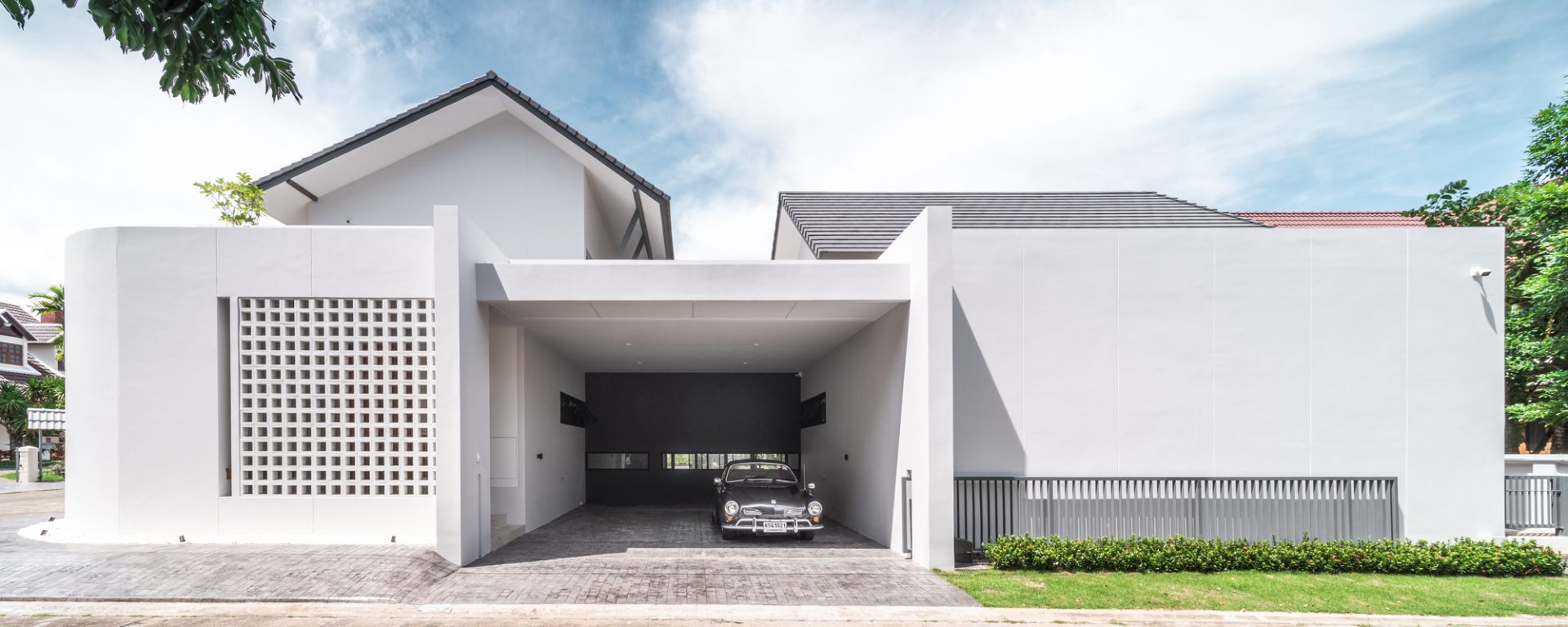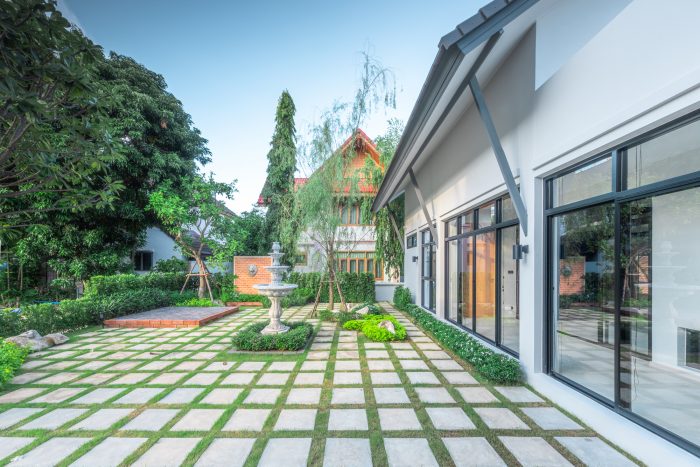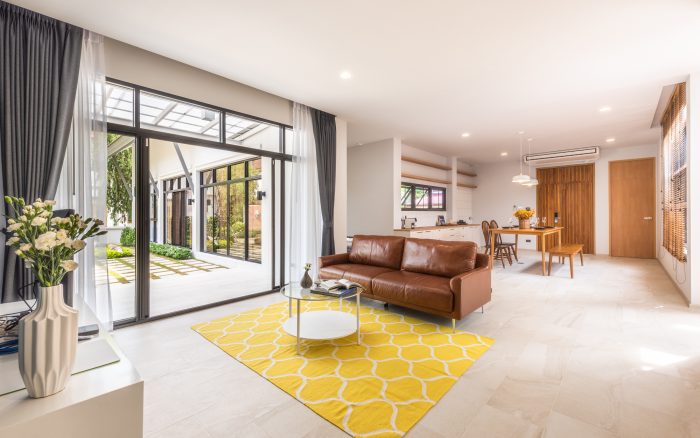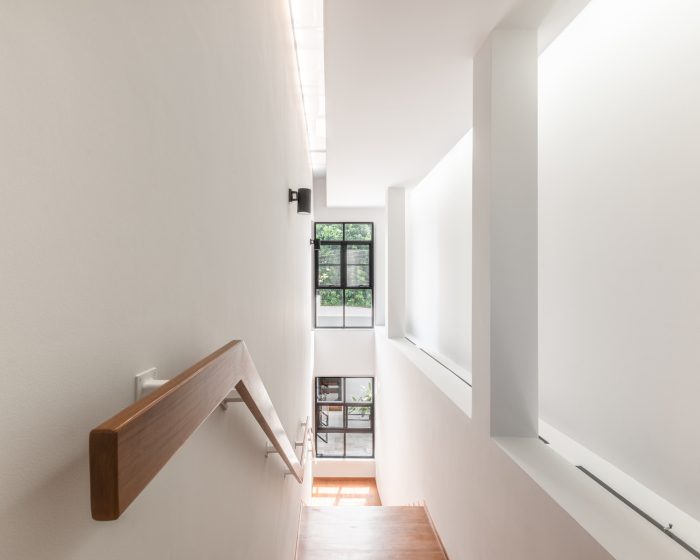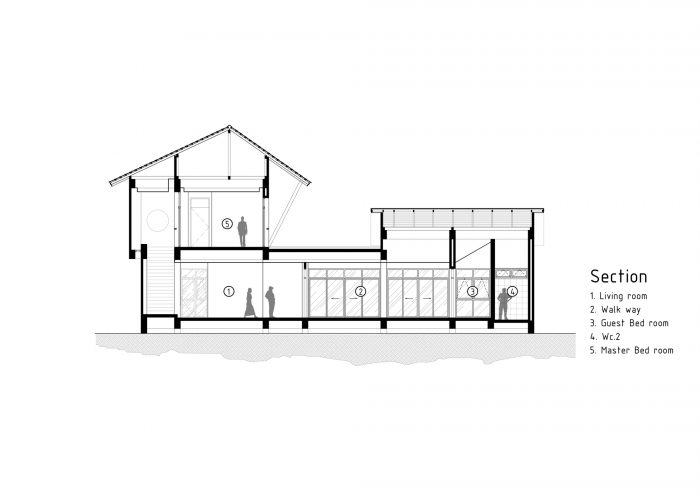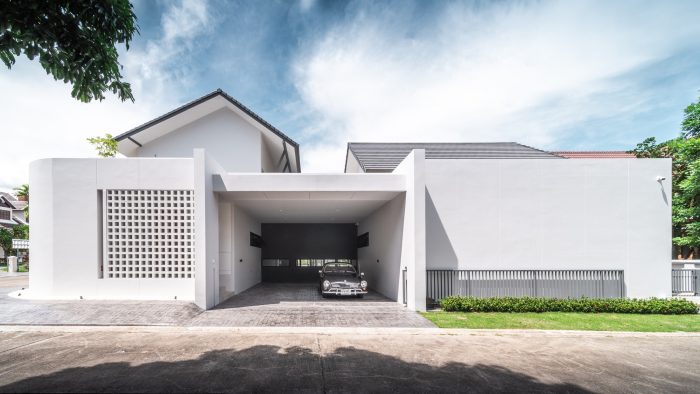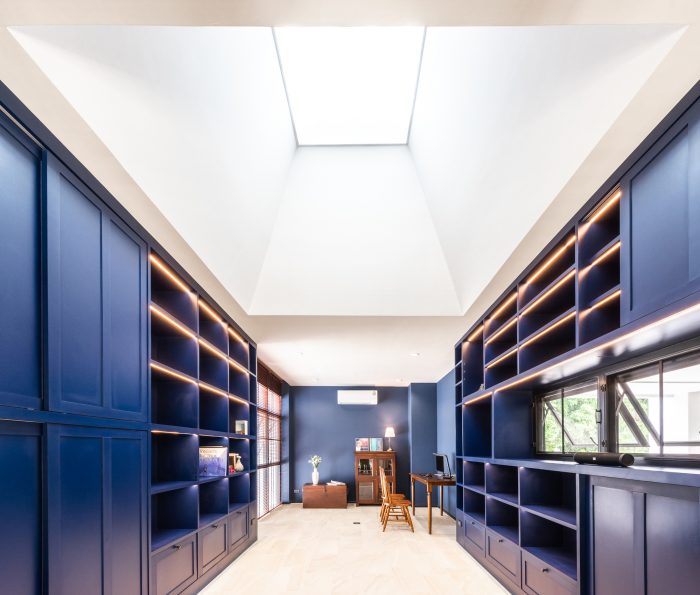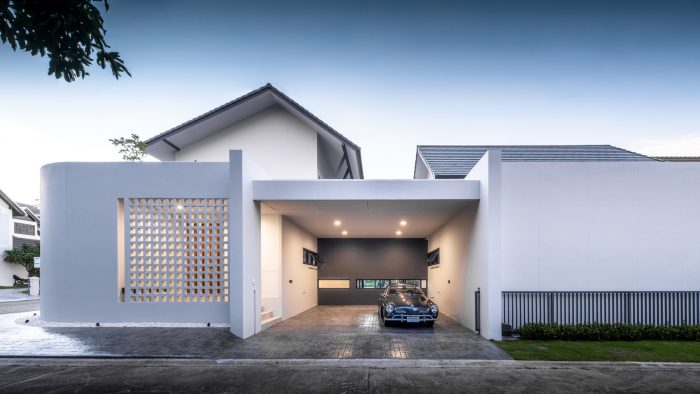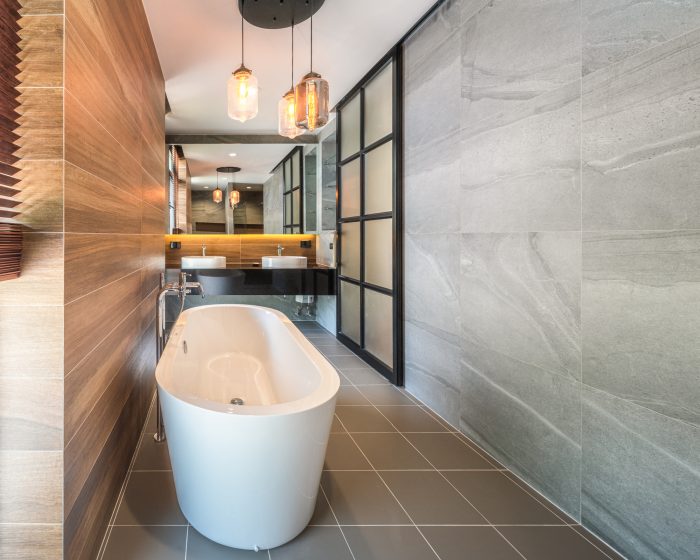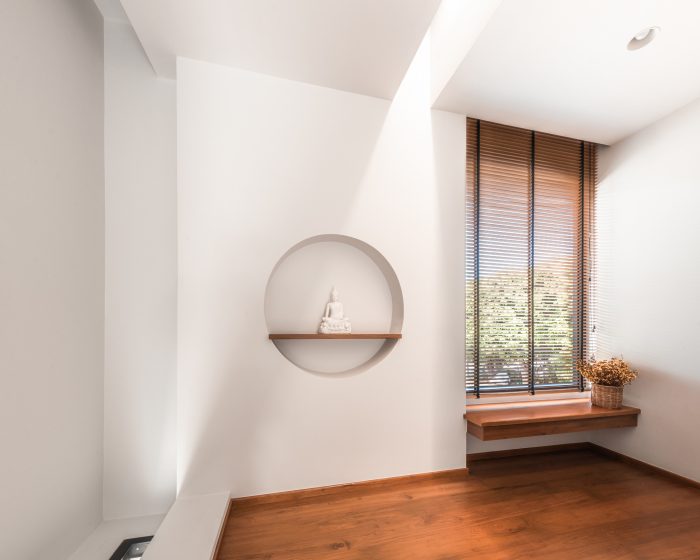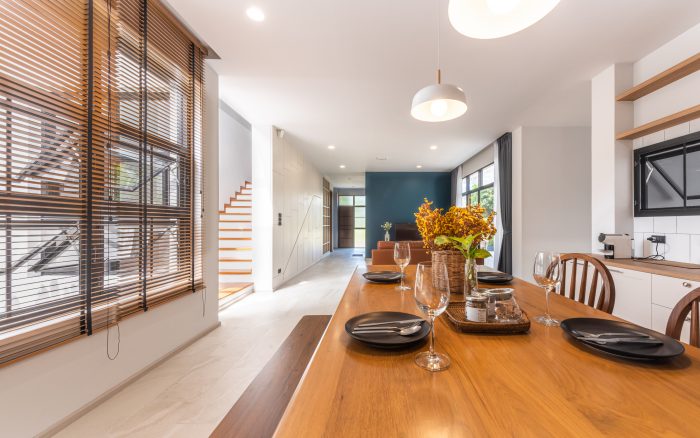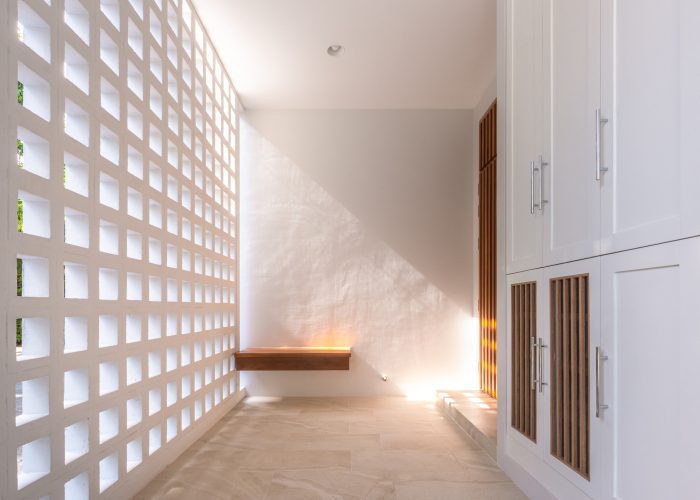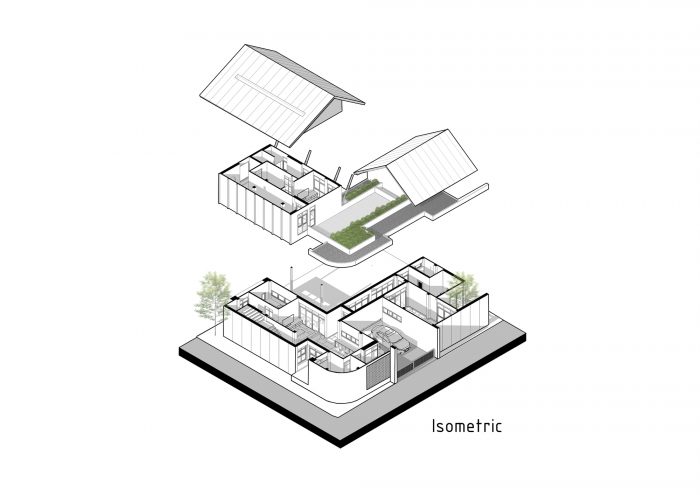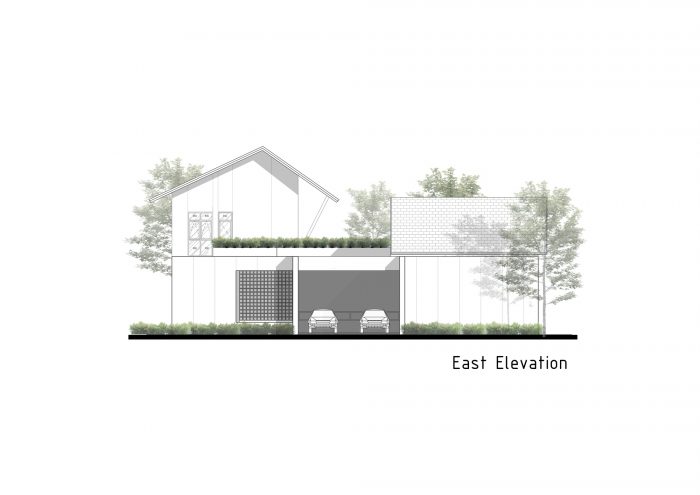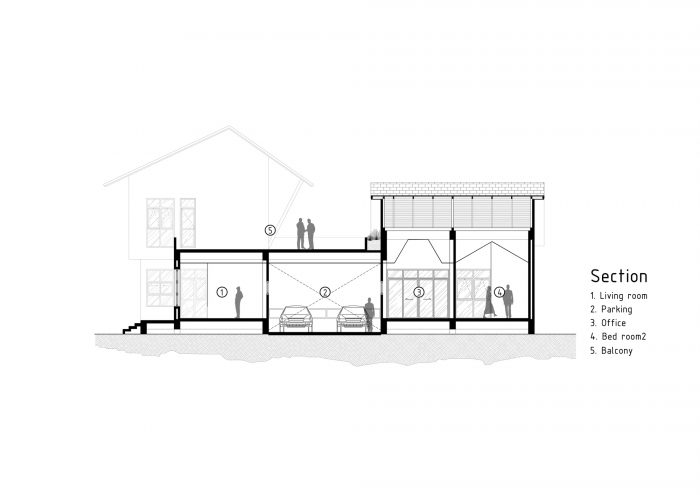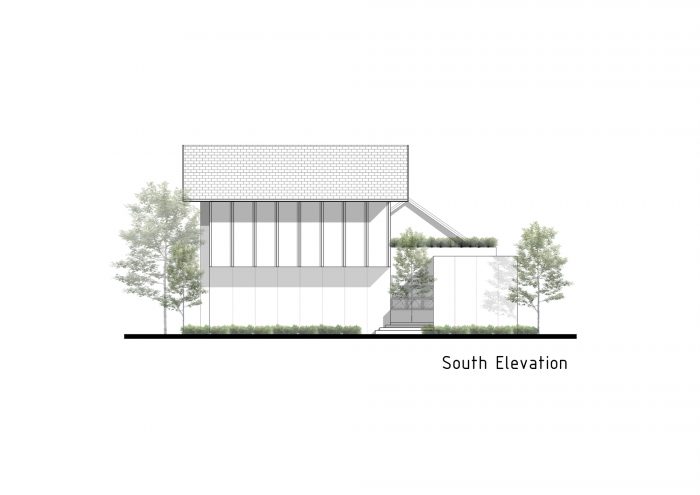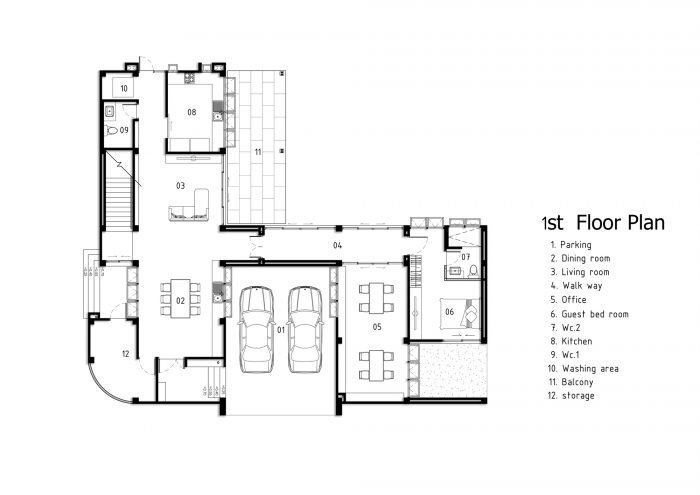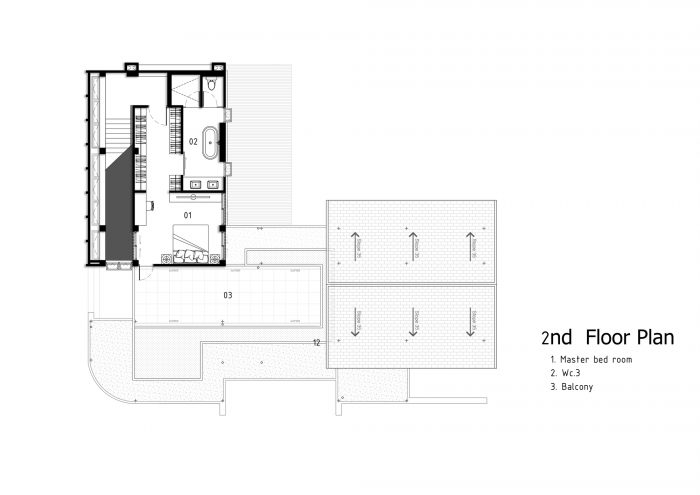NT房子位于清迈市早期的住宅项目(1960年左右建立),该项目紧邻Doi Suthep(清迈最重要的山)。不仅是因为位置上的原因,而且两位业主热爱和平、自然和私密性的个性也可以说是设计这栋房子的重要因素。选择这个设计主要是为了应对两个项目背景–营造一个可以欣赏自然的景观–以及房子的完全私密性。
NT house is located in the early housing project (established around 1960) in Chiang Mai city, which is in the vicinity of Doi Suthep (the most important mountain of Chiang Mai). Not only because of the location wise, but also because the personality of two owners who love peace, nature and privacy can be regarded as significant factors in designing this house. The design was primarily chosen to respond to both project contexts – to create a view that can appreciate nature – and the complete privacy of the house.
房子本身的建筑呈L型,向内有一个大的绿地。这种两层楼的房屋由钢筋混凝土结构建造,其中底层由连接到入口大厅和综合客厅-餐厅的插电式停车位组成。一端延续到厨房,而另一端则是学习室和一间套房的客房。房子的另一个重要特征是楼梯大厅。它的功能也是作为一个双重空间的大厅,与二楼移位墙体体积下的空隙。它允许空气可以循环通过。
The house itself has an L-shaped building with a large green space inward. This two-story houses are built from reinforced concrete structures, where the ground floor consists of the plugged-in parking space connecting to the entrance hall and the integrated living-dining room. On the one end it continues to the kitchen, while another end goes to the studying room and a suite guest bedroom. Another important feature of the house is the staircase hall. It functions also as a double space hall with the gap beneath the volume of the shifted wall on the second floor. It allows the air can be circulated through.
这条缝隙–由移位的墙体形成的–为这栋巨大的房子提供了这样一种交替的叠加效果,同时,这条缝隙也成为了让上面的灯光在夜晚照进来的通道。当灯光倾泻到外墙上时,它创造了不同的感觉。二楼楼梯尽头的景致,通向沉在圆弧形墙面上的佛架–营造出一种平和宁静的感觉。而后我们进入二楼卧室,外面有一个阳台,可以种树和晨练。
This gap – created by the shifted wall – offers such an alternated stack effect for this massive house, meanwhile the gap becomes the channel to let the lights from above to shine through at night. It creates the different feeling when the lights are pouring out onto the external wall. The view at the end of the second floor stairs leads to the Buddha shelf sunken in a circular shape wall – to create a sense of calm and serene. And then we enter the second floor bedroom, and outside with a balcony for planting trees and morning exercise.
因为我们的目标是最大限度地利用绿化空间,所以将绿化空间设在后面似乎是最好的选择。这也让我们把房子建在靠近后退边界的地方,房子的墙体是一体化的,同时也起到了围墙的作用。对我们来说,这是一个创造实心砖建筑形状的好机会,墙面可以成为树的俏皮影子和建筑本身的背景。不透明的形状在夜晚的灯光下被取代,似乎房子的表情在每时每刻都发生了变化。
Because we aim to maximize the use of green space, so by locating green space at the back seems to be the best option. It also allows us to build the house close to the set-back boundary, where the walls of the house are integrated and function as a fence all at once. For us, it was a great opportunity to create a shape of the solid block building, where the wall surface can become the backdrop of the playful shadow of the tree and of the building itself. Opaque shapes have been replaced with the light at night, it seems like the expression of the house have changed in every moment.
建筑师:2929设计实验室
面积: 400 m²
年份:2020年
摄影:Bline Space
负责建筑师:Sant Suwatcharapinun, Tanawat Malisuwan。
设计团队:2929DesignLab
客户:Natni Mattawanon
工程:Khomsan Kaewudom
城市:清迈
国家:泰国Architects: 2929DesignLab
Area: 400 m²
Year: 2020
Photographs: Bline Space
Architect In Charge:Sant Suwatcharapinun, Tanawat Malisuwan
Design Team:2929DesignLab
Clients:Natni Mattawanon
Engineering:Khomsan Kaewudom
City:Chiang Mai
Country:Thailand

